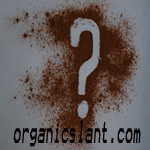|
Ceylon and cassia cinnamon are the most common commercially produced cinnamon varieties. Ceylon cinnamon is often called “true” cinnamon and comes primarily from Sri Lanka. Cassia is also called Saigon or Chinese cinnamon after the country that commonly produces this spice. Both varieties of cinnamon have similar health benefits and nutritional content. However, since cassia contains a higher level of coumarin, which may cause liver damage in high quantities, some health officials recommend Ceylon cinnamon as a healthier alternative. The species is known as Cinnamomum zeylanicum or verum. Cinnamon was popularized by the Egyptians, who imported it from Sri Lanka thousands of years ago. Cinnamon developed a reputation as an exotic spice with medicinal value. Over the centuries, cinnamon became much more expensive and difficult to import because of high demand and limited supply. American traders began to import a much higher proportion of cassia varieties, which sold well because of their cheap cost and stronger taste. Real cinnamon, a spice derived from the tropical evergreen tree Cinnamomum zeylanicum, is not commonly used in North America because of its cost. Instead, for about the past 100 years, most Americans have been using a close cousin, Cinnamomum cassia, without being aware of the distinction. The cassia-derived varieties dominate the North American market, especially in commercially produced goods, and have recently been referred to as “fake” cinnamon. Fake cinnamon tastes stronger than real cinnamon and may have similar beneficial properties, but it’s significantly higher in a blood thinning compound called coumarin. Ask your doctor if it’s appropriate for you to be consuming products that contain coumarin. Fake Cinnamon
Fake cinnamon is still derived from tropical evergreens, but from different species that grow outside of Sri Lanka, mainly China, Vietnam and Indonesia. Fake cinnamon is much cheaper because it grows in more than one region, and many different cassias can be used for its production. Cassia-based cinnamon is typically much stronger tasting and has a fuller body compared with real cinnamon, which may be beneficial for baking cinnamon rolls, pumpkin pies and cookies. However, despite its bolder taste, cassia varieties are usually considered less sweet. Fake cinnamon is also darker colored and denser in texture. Some brands of cinnamon will state which type of tree was used or where it’s from, but many do not, which perpetuates the confusion. Medicinal DifferencesBoth types of cinnamon are good sources of manganese, fiber, iron and calcium. Medicinally, cinnamon has shown to be beneficial for controlling blood sugar levels and reducing “harmful” cholesterol levels, although there is some confusion as to what types of cinnamon were used in the studies. Furthermore, real cinnamon appears to display antibacterial and antifungal properties and so do cassia varieties, but perhaps to a lesser extent. More research needs to be conducted that clearly differentiates the health benefits between the two main types of cinnamon. Antioxidant LevelsBoth Ceylon cinnamon and cassia are high in antioxidants, which are molecules that inhibit the free radicals that can contribute to cancer, heart disease, Alzheimer’s disease and macular degeneration. Although scientific studies have failed to provide conclusive evidence that increased antioxidants alone can treat or inhibit the onset of any disease, MayoClinic.com suggests that eating foods rich in antioxidants and other nutrients, such as cinnamon, may play a role in maintaining a healthy body. Antimicrobial PropertiesAccording to a study done by Kansas State University, cinnamon is deadly to microbes such as the E. coli bacteria, which can cause food poisoning. In this study, the spice killed more than 99 percent of the bacteria in a highly contaminated sample of apple juice over a three-day period. Past studies have also shown that breads and meats prepared with cinnamon spoil more slowly. In these cases, scientists suspect that cinnamon may prevent disease by acting as a natural preservative. CautionCassia-based cinnamon is significantly higher in coumarin, which is a compound with blood-thinning properties. According to the book “Principles and Practice of Phytotherapy,” cassia-based cinnamons typically contain 100 or more times as much coumarin compared with the real variety. Natural sources of coumarin may interact and potentiate blood-thinning medications, so consult with your doctor before consuming moderate or large amounts of either cinnamon. Ground CinnamonBecause there is no way to tell if the cinnamon powder has been made from the Ceylon or true cinnamon versus the Cassia cinnamon, and most bottles of cinnamon we buy do not indicate the type of cinnamon tree the cinnamon is sourced from. In many countries this Ceylon cinnamon is just not imported in the country. Check directly with the supplier to ascertain its origin of the cinnamon before buying the cinnamon powder. Cinnamon SticksAs for the cinnamon sticks, there are several ways of determining whether you are getting the real deal. I’ve taken a picture of the two types and placed them side by side. Study the following table and check the cinnamon sticks in your kitchen right away to find what you have been eating all this time.
|



 Excessive fructose consumption may cause a leaky gut, leading to fatty liver disease
Excessive fructose consumption may cause a leaky gut, leading to fatty liver disease Forks Over Knives Documentary Reveals Healing Power Of Plant-Based Diet
Forks Over Knives Documentary Reveals Healing Power Of Plant-Based Diet How catnip makes the chemical that causes cats to go crazy
How catnip makes the chemical that causes cats to go crazy